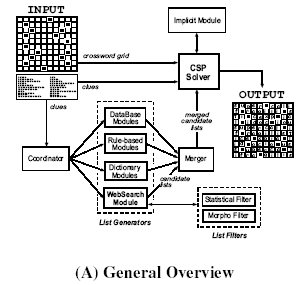Question Answering (QA) system is a way of information retrieval by means of computing. It requires more complex natural language processing (NLP) techniques than other types of information retrieval such as information extraction.

In the 1960s the first two QA systems were developped: LUNAR (it answered questions about the geological analysis of rocks returned by the Apollo moon missions) and BASEBALL (it answered questions about the US baseball league).
A posed question in natural language (easily understandable) is answered by a machine. It retrieves the information in two different ways:
– By looking it up in a pre-structured database that lies inside it or a collection of articles that are also inside the system.
– By searching in a very open web, like the world wide web.
The posed questions can belong to an open-domain (can refer to nearly everything) or to a closed-domain (refer to a specific subject, such as medicine or flowers, for example). The system looks for the answer by analysing the words of the question (key-word based techniques); but in some cases this way of finding the correct answer is not enough, and here different and complicated methods will be used: These techniques might include named-entity recognition, relation detection, coreference resolution, syntactic alternations, word sense disambiguation, logic form transformation, logical inferences (abduction) and commonsense reasoning, temporal or spatial reasoning…
Ryan McCabe (University of Massachusetts, Amherst) and M. Chase Smith (Amherst College) have created a Question Answer web page, that explains the techniques used, its history, and so much interesting information about QA.
Some interesting QA systems are the ones that follow:
- Answers.com : it is a well-known open-domain QA system
- Ask.com: when a question is posed, this QA system redirects you to several pages that contain some of the items you asked on, so it works as a searcher more than as an advanced QA page.
- Semote: it also redirects the answerer to some different issues found on the internet when a question is posed, but the results are very accurated.
- Qualim: works the same way as Semote.
- Anna (in IKEA): it is a closed-domain QA that brings the answerer to the correct section, where what he/she needs can be found.
REFERENCES
– Question answering. (2009, June 13). In Wikipedia, The Free Encyclopedia. Retrieved 19:00, June 21, 2009, from http://en.wikipedia.org/w/index.php?title=Question_answering&oldid=296213100
– Question Answering. By Ryan McCabe (University of Massachusetts, Amherst) and M. Chase Smith (Amherst College). Retrieved 19:11, June 21, 2009, from http://ciir.cs.umass.edu/REU/2000/REUpres/QAFinal_files/frame.htm
– Learning surface text patterns for a Question Answering system (2001). Written by Deepak Ravichandran (University of Southern California, Marina del Rey, CA) and Eduard Hovy (University of Southern California, Marina del Rey, CA. Retrieved 20:22, June 21, 2009, from http://portal.acm.org/citation.cfm?id=1073092
– The TREC-8 question answering track report. By Ellen M. Voorhees (National Institute of Standards and Technology, Gaithersburg). Retrieved 20:36, June 21, 209, from http://66.102.1.104/scholar?hl=es&lr=&q=cache:eGBdGvbpDh4J:citeseerx.ist.psu.edu/viewdoc/download%3Fdoi%3D10.1.1.38.6392%26rep%3Drep1%26type%3Dpdf+question+answering